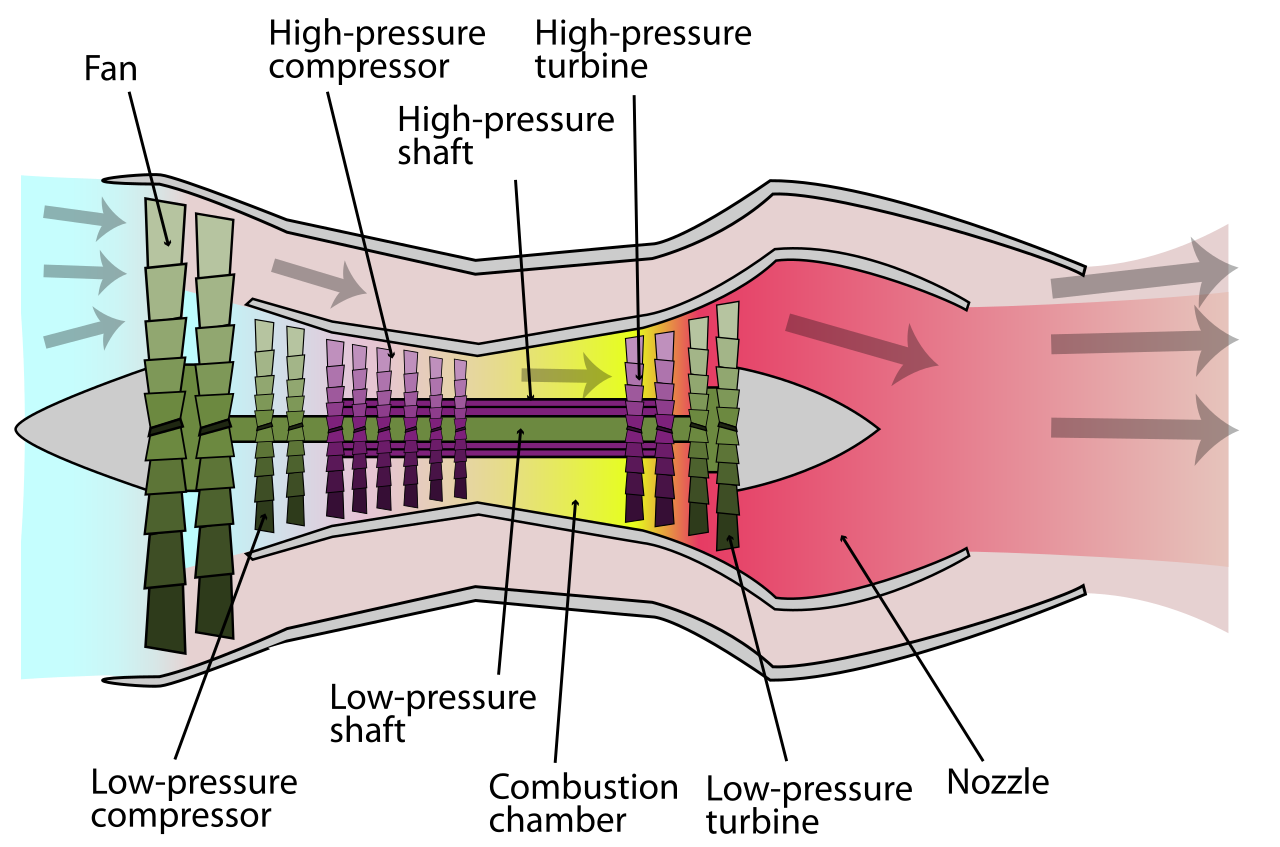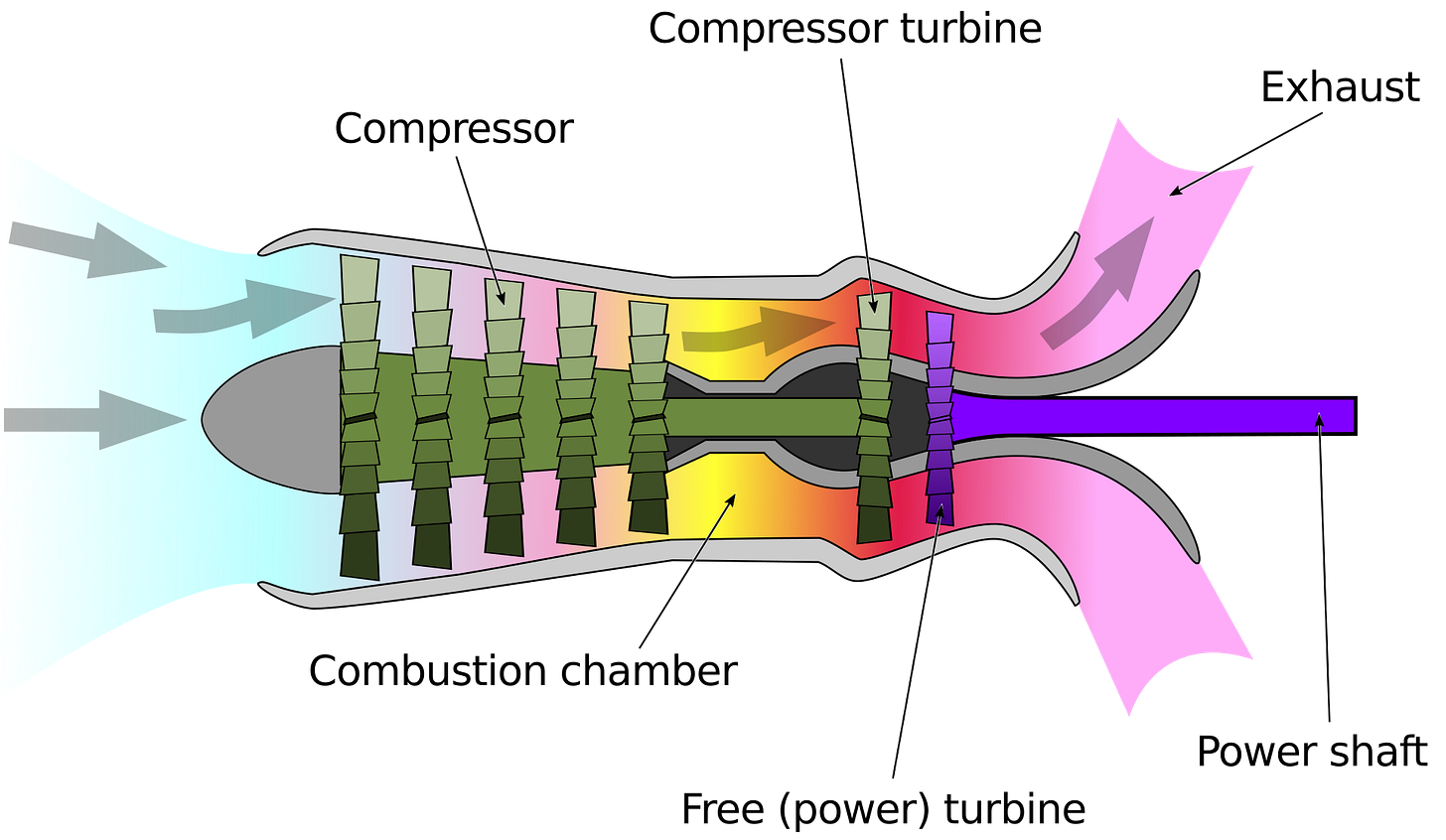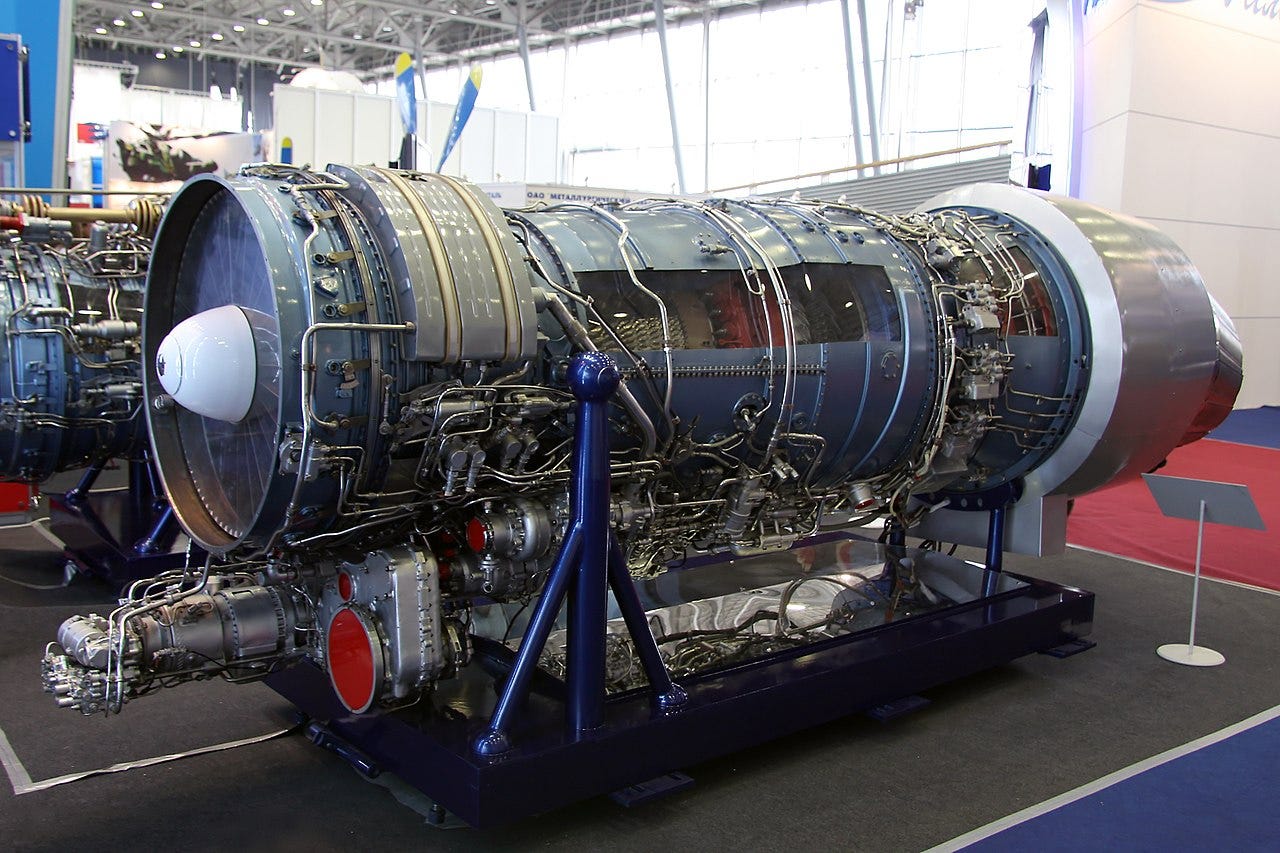Jet Engines: The Power Behind Modern Flight
Learn about all the different types of Jet Engines
Introduction
Ever looked up at a plane zooming across the sky and wondered, "What makes that huge thing fly?" The answer lies in one of the coolest inventions ever: the jet engine. Let’s learn about them today—how they work, the different types, and why they’re so complex. By the end, you’ll see why these engines are a true marvel of engineering!
The Basics: How Does a Jet Engine Work?
At its core, a jet engine works on a simple idea: suck in air, squeeze it, mix it with fuel, and then blow it out really fast to push the plane forward. Sounds simple, right? But let’s break it down step by step:
1. Intake: The engine starts by sucking in air from the front. The faster the plane goes, the more air gets pulled in.
2. Compression: Inside the engine, there’s a part called the compressor. This part squeezes the air, making it super dense and pushing it into a smaller space.
3. Combustion: The squeezed air is mixed with fuel and then ignited. This causes a massive explosion (controlled, of course), which produces a lot of hot gas.
4. Exhaust: The hot gas shoots out the back of the engine at high speed. This backward force pushes the plane forward (thanks, Newton’s Third Law!).
Different Types of Jet Engines
Jet engines aren’t one-size-fits-all. Different planes need different types of engines depending on what they’re supposed to do. Let’s take a closer look at the main types:
Turbojet
How It Works
The turbojet is the simplest type of jet engine and the one we just described in the basics. Air gets sucked in, compressed, mixed with fuel, and then blown out to create thrust.
Pros:
- High speed: Great for supersonic (faster than the speed of sound) flights.
- Lightweight: Compared to other jet engines, turbojets are relatively light.
Cons
- Fuel-hungry: Turbojets aren’t very fuel-efficient, especially at lower speeds.
- Noisy: They can be really loud.
Applications: Turbojets were used in early jet planes like the F-86 Sabre and the MiG-15. Today, they’re mostly found in military aircraft that need to go super fast.
Turbofan
How It Works
The turbofan is the most common jet engine today. It’s like a turbojet but with a big fan at the front. This fan pushes a lot of air around the outside of the engine, not just through it.
Pros:
- Fuel-efficient: Turbofans are much more fuel-efficient than turbojets, especially at lower speeds.
- Quieter: The extra air around the engine also makes it quieter.
Cons:
- Heavier: The big fan adds weight, which can be a downside for certain planes.
- Less efficient at very high speeds: Turbofans are best for subsonic (below the speed of sound) flights.
Applications: Most commercial airliners, like the Boeing 737 and Airbus A320, use turbofan engines. Military planes like the F-35 also use turbofans.
Turboprop
How It Works:
The turboprop is a mix between a jet engine and a propeller engine. It uses a jet engine to turn a propeller, which then pushes the plane forward.
Turboprop
Pros:
- Super fuel-efficient: Turboprops are even more fuel-efficient than turbofans, making them great for short flights.
- Great for low speeds: Turboprops perform well at lower speeds and altitudes.
Cons:
- Slower: They’re not as fast as turbojets or turbofans.
- Noise: Propellers can be noisy, though not as loud as turbojets.
Applications: Turboprops are common in regional planes like the ATR 72 and military transport planes like the C-130 Hercules.
Turboshaft
How It Works:
The turboshaft engine is similar to the turboprop but is mainly used to power helicopters/ships. Instead of turning a propeller, it turns the rotor blades on top of the helicopter.
Pros:
- Versatile: Turboshafts are highly adaptable and can work in a variety of conditions.
- Compact: They’re designed to be small and lightweight, perfect for helicopters.
Cons:
- Complex maintenance: Like other jet engines, turboshafts require specialized care.
Applications: Most helicopters, like the Bell 206 and the UH-60 Black Hawk, use turboshaft engines.
Ramjet
How It Works
A ramjet engine is like a turbojet but without moving parts! It relies on the plane's speed to "ram" air into the engine. The air is compressed by the speed itself, mixed with fuel, and then ignited to produce thrust.
Pros
- High speed: Ramjets work best at supersonic speeds, making them ideal for high-speed missiles and aircraft.
- Simple design: Without compressors or turbines, ramjets are lighter and simpler than other jet engines.
Cons
- Needs high speed to start: Ramjets can’t start from a standstill; they need to be moving fast (usually launched from another aircraft or rocket) to work.
- Limited to certain speed ranges: Ramjets are efficient only within a specific speed range (around Mach 2 to Mach 6).
Applications
Ramjets are used in supersonic missiles like the BrahMos and experimental high-speed aircraft.
Scramjet
How It Works
Scramjets (Supersonic Combustion Ramjets) are an advanced version of ramjets. They operate at hypersonic speeds (Mach 5 and above) and compress the air even more because the air enters the combustion chamber still traveling at supersonic speeds.
Pros:
- Extremely high speed: Scramjets can reach speeds above Mach 10, making them ideal for spaceplanes or hypersonic missiles.
- No moving parts: Like ramjets, scramjets have no moving parts, making them simpler in design.
Cons:
- Even more speed needed to start: Scramjets require incredibly high speeds to begin functioning, often requiring a rocket or another jet engine to get up to speed.
- Highly complex engineering: Operating at hypersonic speeds involves extreme temperatures and pressures, making scramjets difficult to develop and use.
Applications: Scramjets are still in the experimental stage, but they're being tested for hypersonic missiles and spaceplanes like NASA's X-43A.
Why Are Jet Engines So Complex?
So, if a jet engine’s working principle is simple, why do they look so complicated with all those tubes, wires, and plumbing? Here’s why:
1. Efficiency: Jet engines are designed to squeeze as much energy as possible out of the fuel. This means lots of parts are needed to optimize airflow, fuel injection, and temperature management.
2. Safety: Jet engines operate under extreme conditions—think thousands of degrees of heat and tons of pressure. All those extra parts are there to make sure the engine doesn’t explode or fail mid-flight.
3. Durability: Jet engines are expected to run for thousands of hours without breaking down. To achieve this, engineers add systems for cooling, lubrication, and even special coatings on engine parts to prevent wear and tear.
4. Precision: The inside of a jet engine has to be super precise. Even a tiny mistake can lead to huge problems. This is why you see so many parts working together in perfect harmony.
Conclusion
Jet engines are incredible pieces of technology that have revolutionized the way we travel. From the first turbojets to the modern turbofans and beyond, these engines have made it possible for us to fly faster, farther, and more efficiently than ever before. While they may seem complex, understanding the basics helps us appreciate the genius behind their design.
Next time you see a plane in the sky, you’ll know that it’s not just flying—it’s powered by some seriously cool science and engineering. And who knows? Maybe one day, you’ll be the one designing the next generation of jet engines!
















